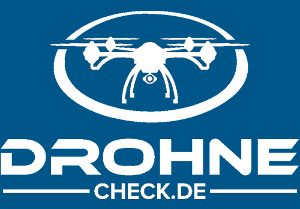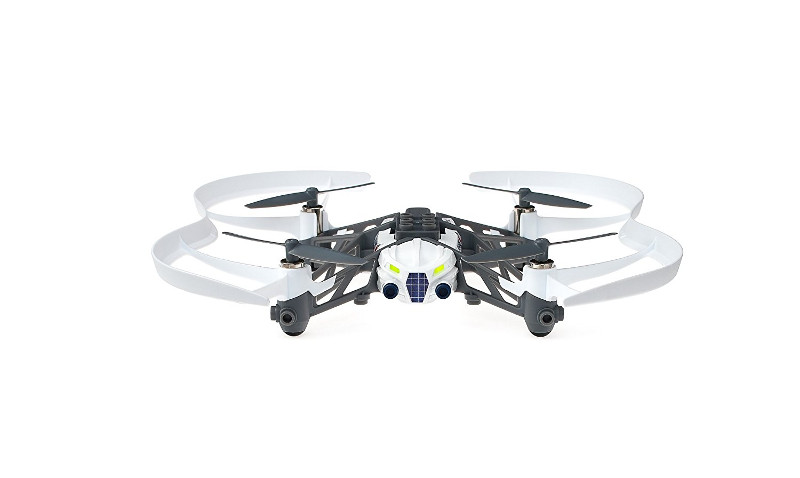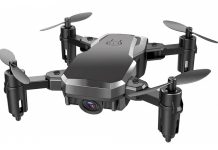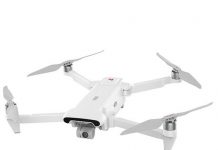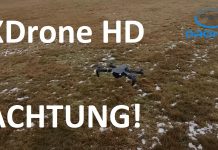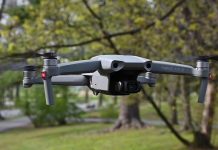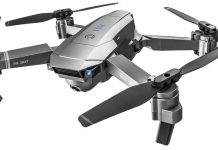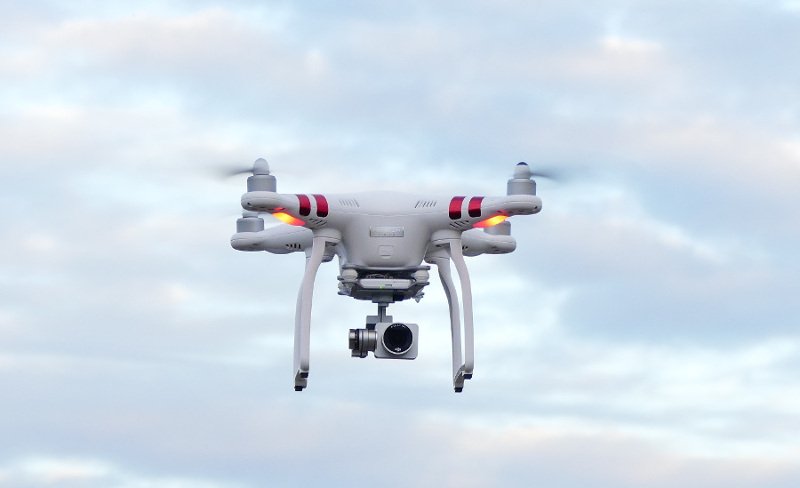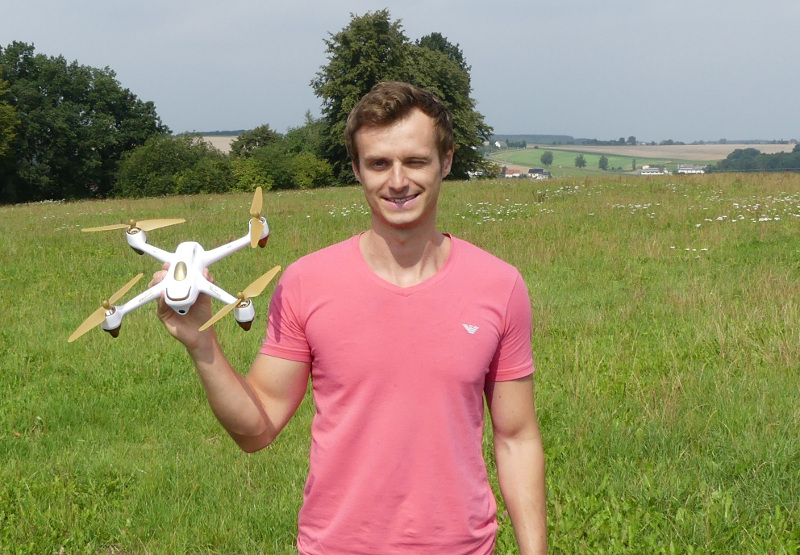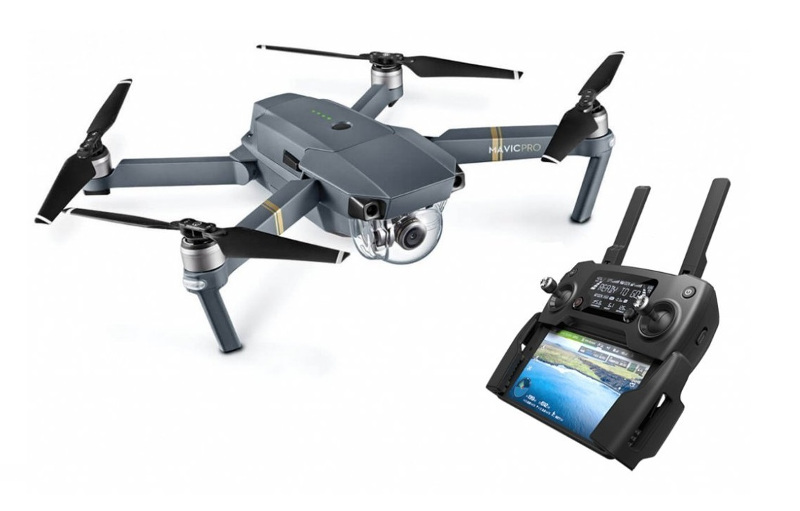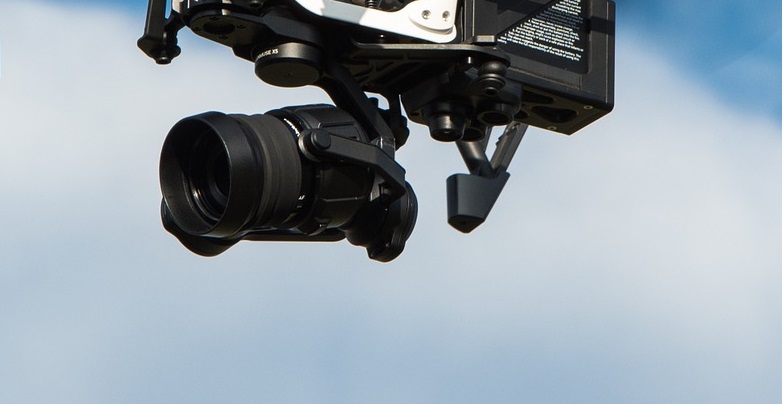
Many modern drones with camera, mini drones and FPV drones have a gimbal system, which stabilizes the image and ensures balanced photo and video recordings.
But what exactly is a mechanical or software gimbal system? We will clarify these questions in the following article and show you the differences between the respective terms.
Gimbal is English and means gimbal in German. This is a system that can take over an external image stabilisation for a camera as its main function.
Simply put, a gimbal is a structure that holds a body and balances it constantly in one position, no matter which side the body is moved to.
But what does all this have to do with drones?
The camera on a drone can be stabilized (like the Phantom 3 Professionel) or not stabilized (like the Hubsan drone). The difference between these copters is clearly in the image stabilisation.
A drone with gimbal provides smooth video recordings, which balances all of the drone’s flight maneuvers, so to speak, and ensures that the camera is in the same position throughout the entire flight.
Mechanical gimbal systems
A mechanical gimbal is a cardanic suspension, which is controlled by brushless motors. Without this motor technology, the smallest vibrations and movements of the camera gimbal could not be balanced.
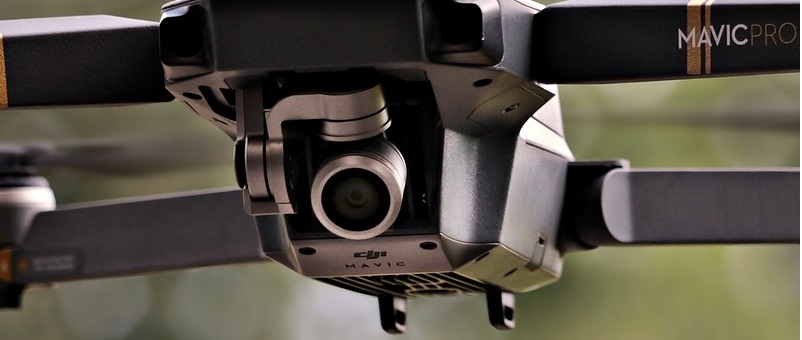
Brushless motors work so fast that the data processed from the measuring unit in real time can be used to eliminate the smallest movements immediately.
The measuring unit is a so-called inertial measuring unit. This highly sophisticated technology, in combination with the extremely fast brushless electric motors, is so good that balancing is no longer visible to the human eye.
The inertial measurement instrument is attached to the front of the camera. It measures the acceleration and position of the camera in space. It can therefore always be held in position so that the camera image remains horizontal.
Videos recorded with a camera with mechanical gimbal make a very calm impression.
Since this technique requires enormously fast & precise movements, the exact adjustment of a gimbal is not that easy. The system must fit exactly to the camera. Since the settings are made in the production of the camera gimbal systems and these only work in combination with their respective cameras, there are almost no universal gimbals that fit many or all recording devices.
Each camera has a different centre of gravity, weight and size. Developing a universal gimbal would therefore be almost impossible.
Advantages of a mechanical gimbal
- Very precise alignment of the camera
- Differences in balancing not visible
- Camera does not have to be permanently installed
Disadvantages
- More expensive compared to the software Gimbal.
- Possible damage in case of a crash.
Software Gimbal Systems
In a software gimbal system, the camera is permanently installed in the drone. The compensation of movements and vibrations is done by software.
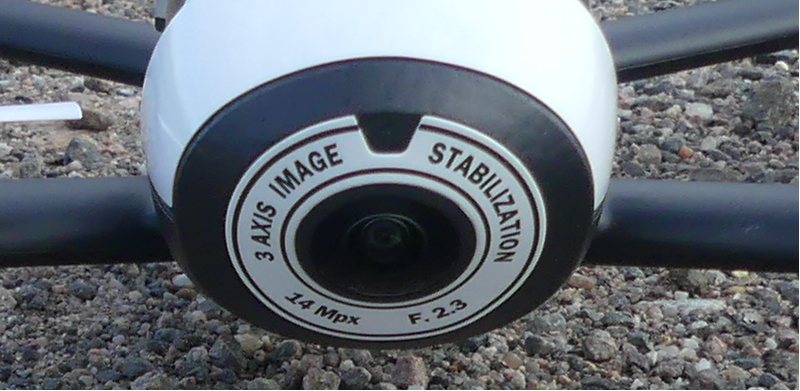
This is the case with the Parrot Bebop 2, for example. This drone has a fisheye lens with a 180 degree wide angle lens. This results in a large, consumed image, where you can look in all directions. So forward, down, right & left.
The Gimbal software then calculates a rectangular image, which is displayed as if the camera were always in a horizontal position.
Advantages of a Software Gimbals
- Inexpensive technology.
- Software camera gimbal systems are much lighter.
- Drones with Gimbal software are less susceptible to crashes.
Disadvantages
- There can be image errors that affect the quality of the image.
Conclusion about the gimbal
Each drone model has a gimbal system tailored to specific characteristics. A primary distinction is made between software and mechanical gimbal systems.
In the field of drones, mechanical camera stabilisation systems are used for the most part.
For example, the manufacturer DJI uses exclusively mechanical gimbals. Parrot, on the other hand, uses fisheye lenses with a software gimbal in many drones.
Since the systems are always permanently installed, when choosing a new drone you must always keep an eye on the gimbal system and its quality.



